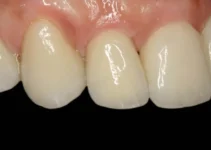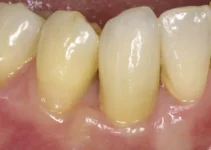Understanding the common dental issues in young ones is crucial for early prevention and treatment. This article explores various dental diseases in children, ranging from tooth decay to gingivitis, and provides practical advice on how to maintain healthy oral hygiene from an early age. We will discuss the importance of regular dental check-ups, the effective use of fluoride, and the role of a balanced diet in preventing dental diseases. With the right preventative measures, parents can help safeguard their children’s smiles for years to come.
Common Dental Diseases in Children
Children are particularly susceptible to dental diseases due to a combination of factors such as diet, oral hygiene habits, and developmental vulnerabilities. Understanding these common dental diseases is crucial in preventing and managing them effectively. Among the most prevalent conditions are tooth decay, gum disease, and dental fluorosis.
By recognizing the signs and symptoms early, and taking necessary preventive measures, the likelihood of these diseases can be significantly reduced. Let’s delve into each of these common dental conditions to better understand their impact on children’s oral health.

Tooth Decay
Tooth decay, also known as dental caries or cavities, is one of the most common dental diseases in children. It occurs when bacteria in the mouth feed on sugars and starches from food and drinks, producing acids that erode the tooth enamel. This process can lead to cavities or even tooth loss if left untreated. The Centers for Disease Control and Prevention (CDC) states that approximately 20% of children aged 5 to 11 years have at least one untreated decayed tooth.
Factors that contribute to tooth decay include poor oral hygiene, frequent consumption of sugary snacks and beverages, and lack of fluoride exposure. Symptoms to watch for include sensitivity to hot or cold, visible holes in teeth, and pain when biting or chewing. Effective prevention strategies include regular brushing and flossing, reducing sugar intake, and ensuring children receive adequate fluoride through water, toothpaste, or professional treatments.
Gum Disease
Gum disease, or periodontal disease, can affect children as well, though it is more commonly seen in adolescents and adults. The initial stage, gingivitis, involves inflammation of the gums due to plaque buildup. If left untreated, it can progress to more severe forms of periodontal disease, causing damage to the gums and supporting structures of the teeth.
Signs of gum disease in children include red, swollen, or bleeding gums, particularly after brushing or flossing. Chronic bad breath and receding gums are also indicators. According to the American Academy of Periodontology, maintaining good oral hygiene and regular dental check-ups are critical in preventing and managing gum disease.
Preventive measures include teaching children the importance of daily brushing and flossing, ensuring they have a balanced diet rich in vitamins and minerals, and scheduling routine dental visits for professional cleanings and examinations.
Dental Fluorosis
Dental fluorosis is a condition that results from excessive fluoride intake during the early years when teeth are forming. Characterized by discoloration and mottling of the enamel, dental fluorosis is mostly a cosmetic concern, but it can affect the appearance of a child’s smile.
Fluorosis occurs primarily when children consume too much fluoride through fluoride toothpaste, supplements, and fluoridated water. The severity of dental fluorosis can range from mild, with small white spots, to severe, with brown stains and pitted enamel. Monitoring fluoride sources and adhering to recommended dosages are essential in preventing this condition.
Parents should ensure children use the appropriate amount of fluoride toothpaste—generally a pea-sized amount for children aged 3 to 6 years—and supervise brushing to prevent swallowing toothpaste. The American Dental Association (ADA) advises consulting with a dentist to determine the proper fluoride exposure and prevent fluorosis. For more in-depth information on pediatric dental care and preventive measures, explore related articles in our series. Understanding these common issues will equip you with the knowledge to safeguard your child’s oral health effectively.
Preventive Measures to Protect Children’s Dental Health
Maintaining good dental health for children is crucial in ensuring their overall well-being. By focusing on preventive measures, parents and caregivers can help their children avoid common dental issues such as cavities and gum disease. Early prevention leads to healthier teeth and gums in the long run, reducing the need for extensive dental procedures as they grow older. Familiarizing oneself with the best practices in children’s dental care can make a significant difference in their oral health.
The foundation of a child’s dental health begins with understanding the importance of regular check-ups and proper oral hygiene practices. Educating children on the significance of these habits can instill a lifetime of good dental care. Preventive measures are essential not only for maintaining a healthy smile but also for preventing more severe health issues that can arise from poor oral hygiene.
Regular Dental Check-ups
Regular dental check-ups are a cornerstone of preventive dental care. These visits allow the dentist to monitor the development of a child’s teeth and gums, catching potential problems early. Early detection of dental issues can prevent minor problems from becoming major ones. The American Dental Association recommends that children visit the dentist every six months for routine check-ups and cleanings.
During these check-ups, dentists can provide professional cleanings that remove plaque and tartar build-up, which are not always effectively removed by regular brushing and flossing. These professional cleanings are crucial for preventing cavities and gum disease. Additionally, dentists can apply fluoride treatments and dental sealants that further protect children’s teeth from decay.
Regular visits to the dentist also help in educating both parents and children about the best practices in oral hygiene. Dentists can offer tailored advice on brushing and flossing techniques, diet recommendations, and other habits that promote good dental health. This guidance is essential for ensuring that children understand the importance of maintaining their oral health.
Proper Brushing and Flossing Techniques
Proper brushing and flossing techniques are fundamental in maintaining a child’s dental health. Teaching children how to brush their teeth correctly ensures that they effectively remove food particles and plaque from their teeth. It is recommended that children brush at least twice a day, using a soft-bristled toothbrush and fluoride toothpaste. The toothbrush should be held at a 45-degree angle to the gums, and gentle, circular motions should be used to clean all surfaces of the teeth.
Flossing is equally important as brushing, as it helps remove food particles and plaque from areas that a toothbrush cannot reach, such as between the teeth and under the gumline. Parents should guide young children in flossing until they can do it independently. It is beneficial to floss once a day, preferably before bedtime, to ensure that all debris and plaque are removed before the child sleeps.
Incorporating these habits into a daily routine can significantly reduce the risk of cavities and gum disease. It is helpful to make brushing and flossing a fun and engaging activity. Using flavored toothpaste, colorful toothbrushes, and even setting a timer to ensure proper brushing duration can make these tasks more enjoyable for children.
By emphasizing the importance of regular dental check-ups and proper brushing and flossing techniques, parents can help lay the groundwork for a lifetime of healthy dental habits. For more in-depth information on dental care and other related topics, consider exploring other articles in our series.
Nutritional Tips for Healthy Teeth
Maintaining healthy teeth goes beyond just regular brushing and flossing; it also involves making smart nutritional choices. A balanced diet is essential for strong teeth and gums, as the foods and drinks you consume directly impact your oral health. Research has shown that poor nutrition can speed up the progression of oral diseases. In this article, we will explore the relationship between diet and dental health and provide tips on how to keep your teeth in optimal condition through nutrition.
By understanding which foods and nutrients are best for your teeth, you can take proactive steps to prevent cavities, gum disease, and other dental issues. Let’s delve into the world of nutrition and learn how to make choices that benefit our smiles.
Understanding Sugary Snacks and Drinks
Sugary snacks and drinks are among the worst offenders when it comes to oral health. When you consume sugary items, the bacteria in your mouth feed on the sugar and produce acid as a byproduct. This acid can erode tooth enamel, leading to cavities and tooth decay. Frequent snacking on sugary foods can be particularly harmful because it continuously exposes your teeth to damaging acids.
It’s important to note that it’s not just about avoiding obvious sugary snacks like candies and sodas. Many foods, such as fruit juices, flavored yogurts, and even some sauces, also contain high levels of sugar. Being mindful of hidden sugars in your diet can significantly reduce your risk of dental issues. Here are some tips to minimize the impact of sugary snacks and drinks on your teeth:
- Limit your intake of sugary foods and beverages.
- Rinse your mouth with water after consuming sugary items.
- Opt for sugar-free or low-sugar alternatives wherever possible.
- Maintain a routine of brushing and flossing, especially after consuming sugary foods.
Vital Nutrients for Strong Teeth
Strong teeth require a variety of essential nutrients. Calcium is pivotal for maintaining the structural integrity of your teeth. Dairy products like milk, cheese, and yogurt are excellent sources of calcium. If you are lactose intolerant, consider alternatives like fortified plant-based milk or leafy greens like kale and broccoli.
Vitamin D is equally important as it aids in the absorption of calcium. Exposure to sunlight can help your body synthesize vitamin D, but you can also get it from foods like fatty fish, eggs, and fortified cereals. Ensuring adequate vitamin D levels supports healthy teeth and bones.
Another crucial nutrient is phosphorus, found in foods such as meat, fish, eggs, and dairy products. Phosphorus works alongside calcium to build strong tooth enamel. Additionally, vitamin C found in citrus fruits, strawberries, and peppers, is essential for gum health. It helps in the repair and maintenance of gum tissues, reducing the risk of gingivitis and gum disease.
Incorporating these nutrients into your diet can help fortify your teeth and gums, making them more resistant to decay and disease.
Hydration and Its Role in Oral Health
Staying hydrated is crucial for overall health, but it also plays a significant role in maintaining good oral health. Water helps to wash away food particles and sugars that can lead to cavities. It also dilutes acids produced by bacteria in the mouth. Drinking water, especially fluoridated water, can help strengthen your teeth and prevent decay.
Saliva production is another key aspect of oral health influenced by hydration. Saliva not only helps in digesting food but also neutralizes acids and provides disease-fighting substances throughout the mouth. Chronic dehydration can reduce saliva production, leading to dry mouth, which increases the risk of tooth decay and infection.
Additionally, some beverages, such as sports drinks and sodas, contain high amounts of sugar and acids that can erode tooth enamel. It is beneficial to choose water or other unsweetened beverages to maintain oral health.
For your daily hydration needs:
- Drink at least 8 cups (64 ounces) of water daily.
- Limit your intake of acidic and sugary drinks.
- Carry a water bottle to sip throughout the day.
By focusing on good nutrition and proper hydration, you can significantly improve your oral health. For more insights and tips on maintaining a healthy smile, explore our other articles. Knowledge is power, and understanding how to care for your teeth through diet is a great step towards achieving a beautiful, healthy smile.
Dental Diseases in Children: How to Protect the Smile of the Little Ones
Understanding common dental diseases in children and how to protect their oral health is crucial for maintaining their beautiful smiles. Here, we address some of the most pertinent concerns parents may have.
What are common dental diseases in children and how can they be prevented?
Common dental diseases in children include cavities (dental caries), gum disease (gingivitis), and dental erosion. Prevention is key and can be achieved through regular brushing with fluoride toothpaste, flossing, eating a balanced diet low in sugary snacks, and routine dental check-ups. Education on proper brushing techniques and the importance of oral hygiene from an early age is essential to prevent these dental issues.

My name is Salman Kapa, a 73-year-old expert in bone regeneration and dental implantology. With decades of experience in the field, I am dedicated to advancing our understanding of oral health and hygiene. Through my research and writing, I aim to contribute to the development of innovative solutions in dental care.




